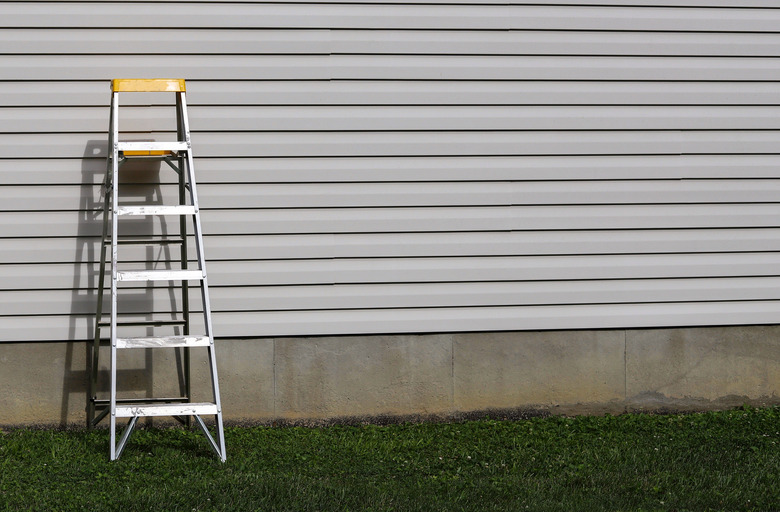How To Install Vinyl Siding Over Lap Siding
Vinyl siding is a popular choice for homeowners looking to refurbish the exterior of their home for a number of reasons. For one thing, vinyl siding is a fairly inexpensive way to do a major home improvement that will change the look of your home on a large scale. Vinyl siding, unlike wood, is insect-resistant, rot-resistant and never needs to be repainted. Vinyl siding is also more durable, which is helpful for homes in areas that frequently experience inclement weather.
What is Lap Siding?
What is Lap Siding?
Lap siding is often referred to as clapboard or horizontal siding. It's essentially a product that can be installed on the side of a home's exterior for aesthetic and protective purposes. It's called lap siding because the beveled bottom edge of the top piece of siding generally overlaps with the top edge of the siding below it. There are several varieties of lap siding available in a number of materials including wood, fiber cement, hardwood, masonite and plywood.
Covering Lap Siding with Vinyl
Covering Lap Siding with Vinyl
While covering lap siding with vinyl is an option for some siding, other varieties of lap siding can't be covered by vinyl. Generally, the best idea is to remove any existing siding from your exterior walls before installing the vinyl siding. This goes for fiber cement, hardwood and masonite siding.
If you do decide to cover your lap siding in vinyl, you'll need to first layer the existing lap siding with highly durable foam insulation and a moisture-prevention barrier. This will keep out any dampness that could lead to rot underneath the vinyl siding.
Once you've determined that the existing siding is in good condition and fastened tightly to the wall sheathing, you'll need to remove any external trim from windows and doors. You'll then need to install vertical furring strips and a rigid foam board to create a flat surface. Then, the house will need to be wrapped with polyethylene or a similar moisture barrier before installation.
A fastening strip will need to be installed about an inch above the bottom of the existing wood siding in order to hold the first strip of siding. Next, J-channel strips must be installed vertically at the ends of all walls and around windows and doors before you can begin to snap in the siding snap panels. Once you've snapped in all of the panels, you should make sure to use lugs at all of the windows and above the doors.
